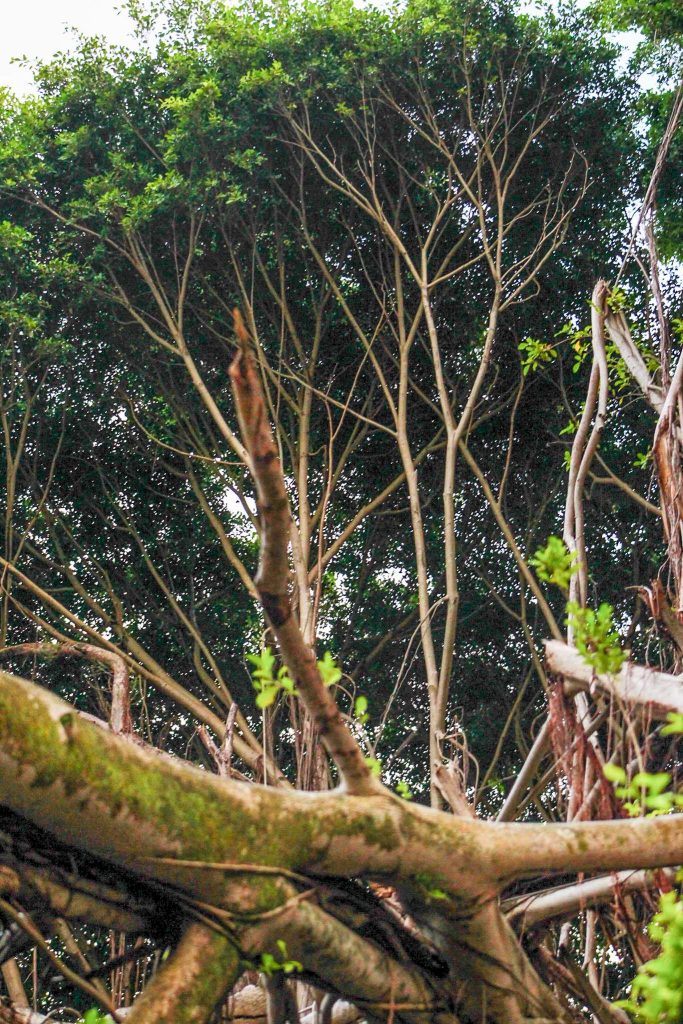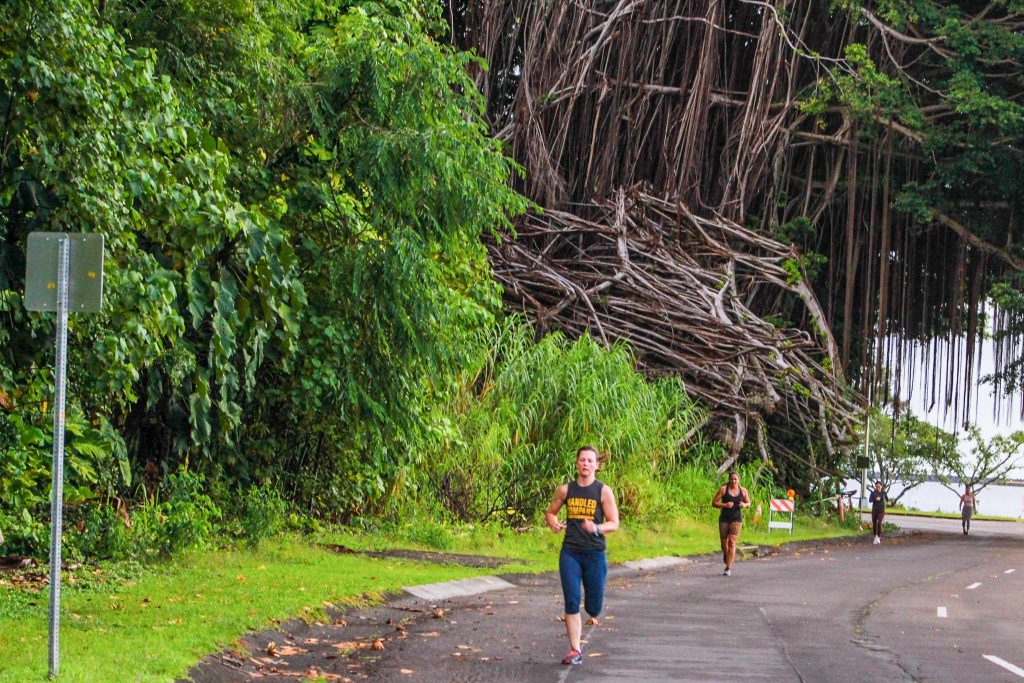Majestic banyan collapses along Hilo’s iconic road adorned with celebrity-planted trees
A large banyan on the east side of Hilo’s iconic Banyan Drive transformed a few months ago from majestic tree to a collapsed mess.
“I was working every day, then one day I noticed it,” said Miki Malama, an employee at the nearby Naniloa Golf Course. “And we want to know what happened.”
Luana Richardson, President of Friends of Banyan Drive, said Hawaiʻi County representatives told her the tree collapsed on itself, but how and why remains a mystery. She speculates it may have been related to trimming done by county workers, or possibly from the invasive wasps that are killing the decades-old banyans.
The collapsed tree is on state land, which is under the jurisdiction of the Department of Land and Natural Resources but being leased to the County Department of Public Works and the Naniloa Resort Hotel. A representative from DLNR said most of the trees are within the county road boundaries, while others are within the three leased properties and the responsibility of the lessee to maintain.
Multiple attempts were made to DLNR and the County Department of Public Works for clarification on how the tree collapsed, but no explanation was received.
But whatever the reason for the collapse, Richardson said it highlights the need for a plan about how to save the trees for future generations. It’s tricky because the trees are in an area that involves a complex group of businesses, with maintenance responsibility divided between state, local and private entities.
“I feel like there’s a lot of alternatives that we can do to save them,” Richardson said. “What would Banyan Drive be without the trees?”
Banyan Drive is on an archipelago that winds along the coast. The road is an attraction because of its beautiful trees whose collective canopy provides a shady tunnel that weaves through luxury hotels and a golf course — and the stories and history behind the trees.
They were planted mostly in the 1930s through the 1950s to memorialize American movie stars, Hawaiian royalty, explorers, politicians and “other fascinating people who lived at a time when the world was on the brink of monumental change,” according to the blurb for Jane Hoff’s book “The Trees of Banyan Drive.”
The tradition of planting the non-native trees on the road began in 1933 by big-screen star Cecil B. DeMille, who was in Hawaiʻi to film a Hollywood movie. A week later, Babe Ruth arrived in Hilo for an exhibition game and planted another banyan.
The next year President Franklin D. Roosevelt visited the island and he “planted” a tree, which wasn’t easy to set up because he was partially paralyzed and it was a dirt road with overgrown vegetation. Roosevelt actually only touched the tree and threw dirt on its base from inside his car.
It became a tradition, with about 50 banyans ultimately planted. They included one by Amelia Earhart in 1935, five days before she set a world record flying from Honolulu to Oakland, the first solo flight across the Pacific Ocean.
Others trees were planted with wood signs with the names of Louis Armstrong, Babe Ruth, Richard Nixon, King George V, Queen Elizabeth and volcanologist Dr. Thomas Jagger. Some planted their trees. Some did not, with others doing so in their honor.
Most of the trees have survived three tsunamis that devastated Hilo, but many of their wood signs are either rotted, faded or missing.
Sherise Kana’e-Kāne, spokesperson for the Department of Public Works, said the county is in the process of bidding out the tree trimming contract. But there is no action planned to deal with the invasive gall wasp, which is infecting the historic banyans.
The wasps, which also are infecting other trees locally and statewide, burrow into branches of the trees to lay eggs and leaves behind larva that prevents the trees from growing new leaves. These issues, along with overgrowth, are posing a challenge to a road that is famous for its history, a shady walking and jogging route, and popular drive for residents and visitors.
Winston Welch, executive director of Outdoor Circle, a grassroots membership organization focused on environmental preservation, said: “I think what we need to do is figure out: ‘How do we move forward to take care of these extremely iconic trees?'”









